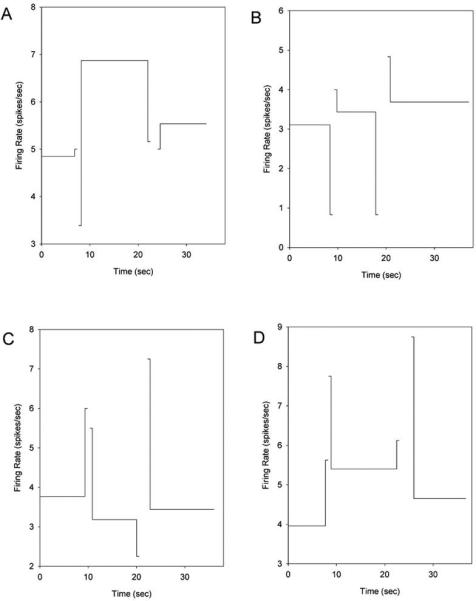Figure 6.

Mean firing rates during the phases of nosepoke occupancy and during the first 200 and last 200 msec of the transition period illustrated in Figure 4. The firing rate of each phase is plotted at the mean time at which these phases began and ended, but was computed with respect to each trial's actual transition times. Although the firing rates were not constant throughout the nosepoking phases (see Figure 5), the pattern of activity across the trial are inconsistent with a monotonic or peak-shaped firing pattern that develops irrespective of the co-occurring motor behaviors, thereby suggesting that the striatum is encoding both the time at which overt behaviors are executed, and the expected reward time or elapsed trial time (i.e., temporal motor coding). The four panels display four representative neurons, but 100% of task-modulated neurons had qualitatively similar patterns. To facilitate display, the duration of the transition segments is shown over 500 msec, rather than the 200 msec used for analysis. Figure as originally published in Portugal, G. S., Wilson, A. G., & Matell, M. S. (2011). Behavioral sensitivity of temporally modulated striatal neurons. Front Integr Neurosci, 5, 30. doi: 10.3389/fnint.2011.00030
